Regional Archetypes
Pokémon often has archetypes of 'mon that they reuse while making a new region. The Pokémon you find at the beginning of the game are probably the most obvious example of this, as there's always a brown mammal, small bird, and interesting bug on the first route. This is a list of those archetypes.
These are generally pretty intuitive to me, as a lifelong fan, but I checked my work with this tiny sliver on the top of a Bulbapedia page. There's a few they list that I think are entirely wrong; for example, I think Cutiefly is more its own thing than a true Regional Bug (especially since Grubbin fills that role for Alola), and Tandemaus is a little too rare, odd, and late to be a true regional mammal.
Regional Mammals
Sometimes called "regional rodents", despite many of them not actually being rodents. They're just... majority rodent-like? Anyhow, a regional mammal is typically a 2-stage Normal-type (or, occasionally, Dark-type) Pokémon that appears on the very first route of the game. The Lillipup line is the only 3-stage example thus far. There's usually 1 or 2 per region, although Unova and Galar both have 3 regional mammal lines.
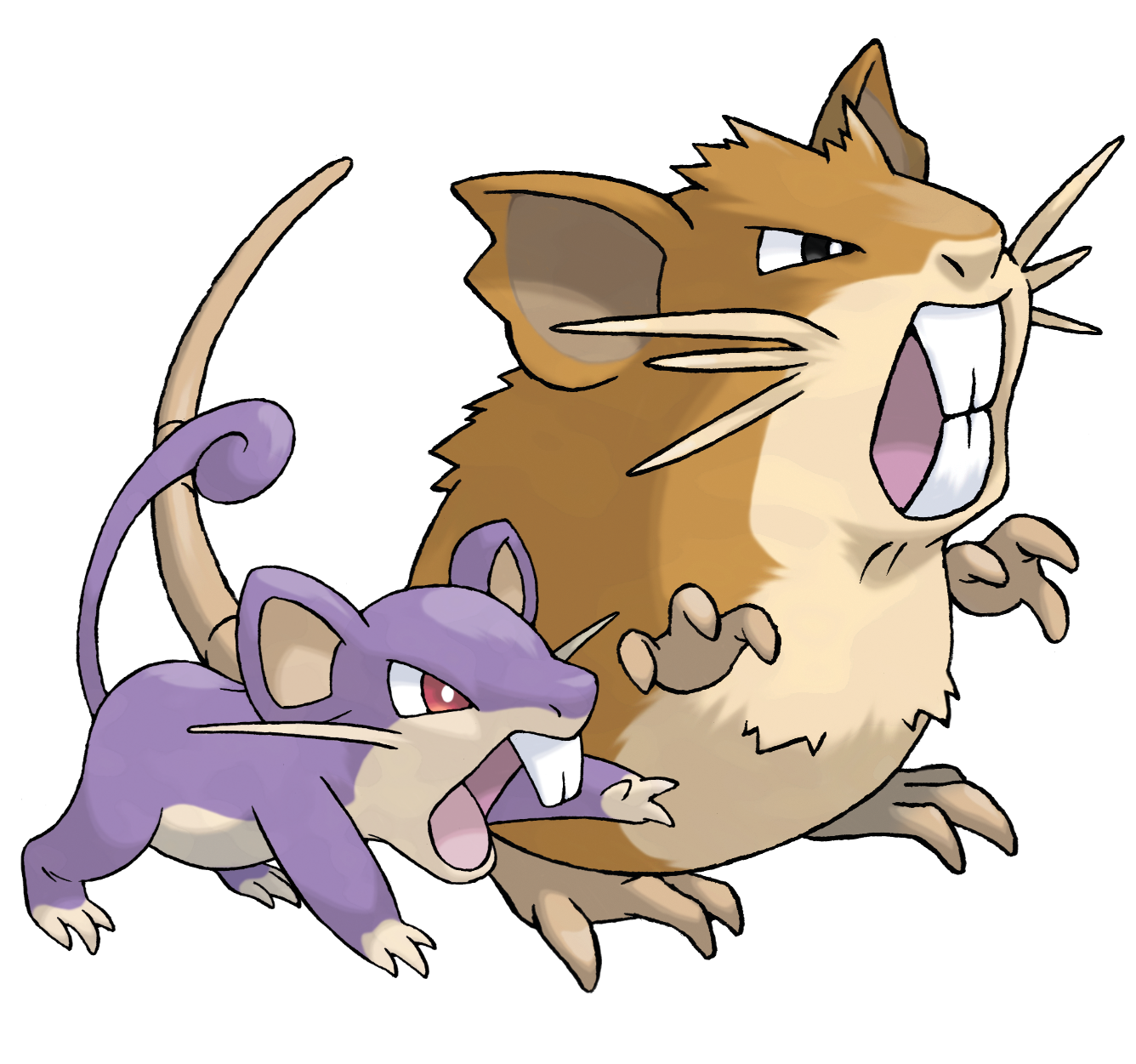
Rattata & Raticate
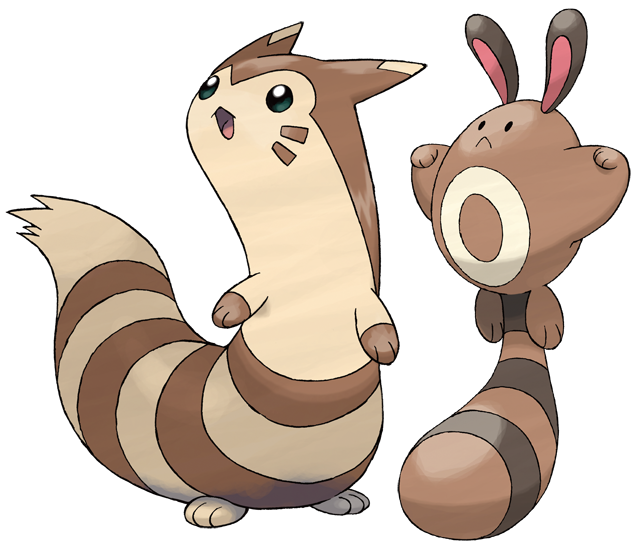
Sentret & Furret
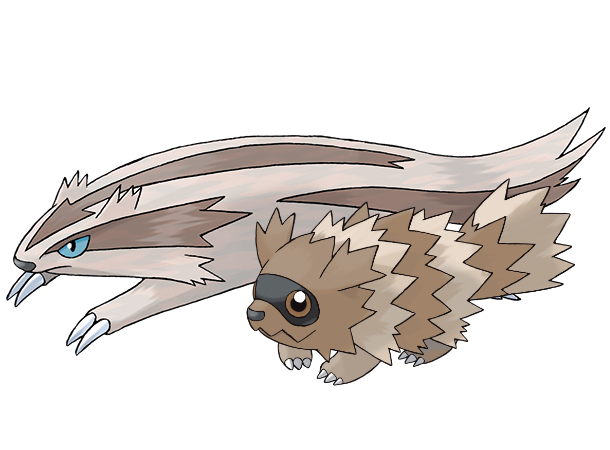
Zigzagoon & Linoone
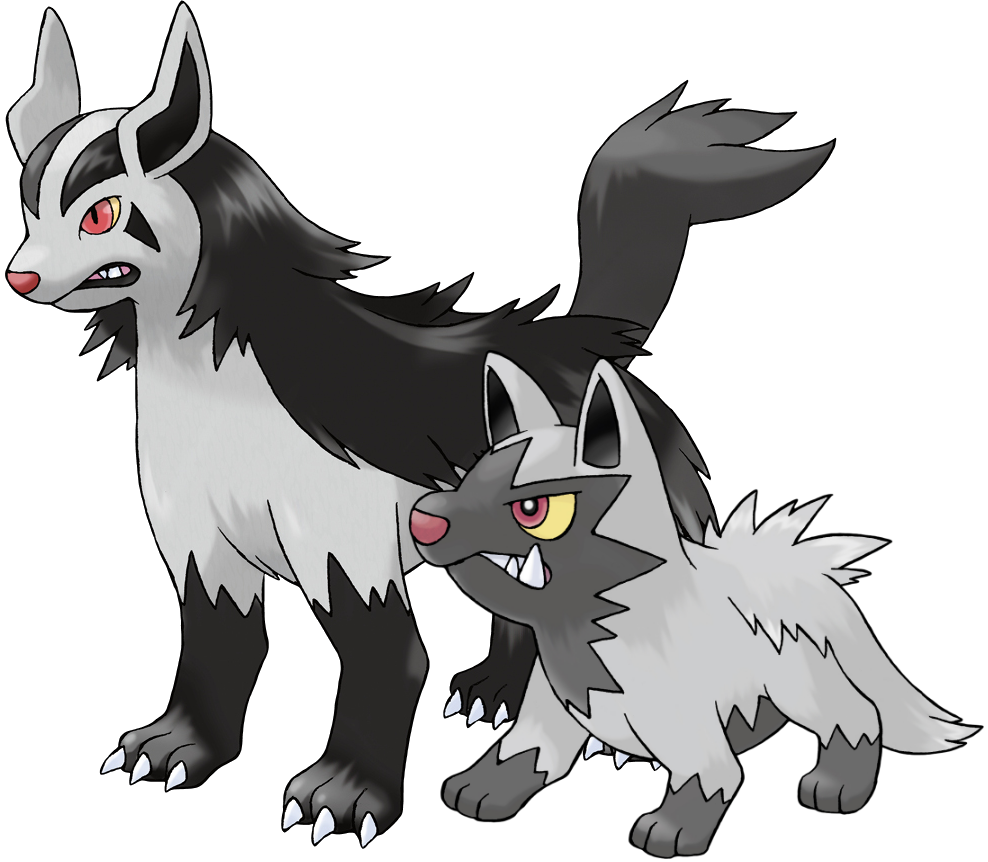
Poochyena & Mightyena
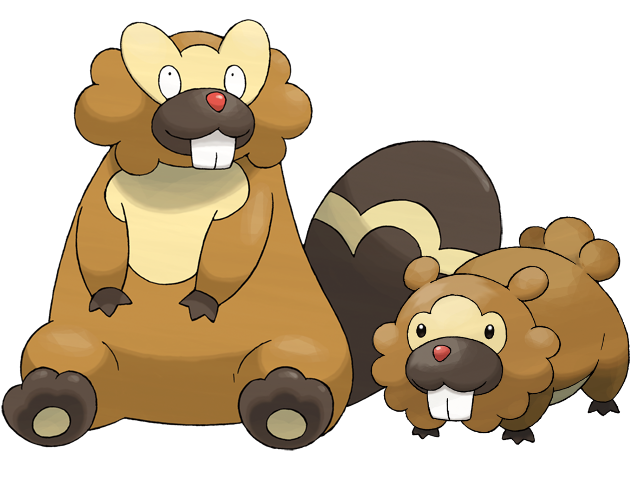
Bidoof & Bibarel
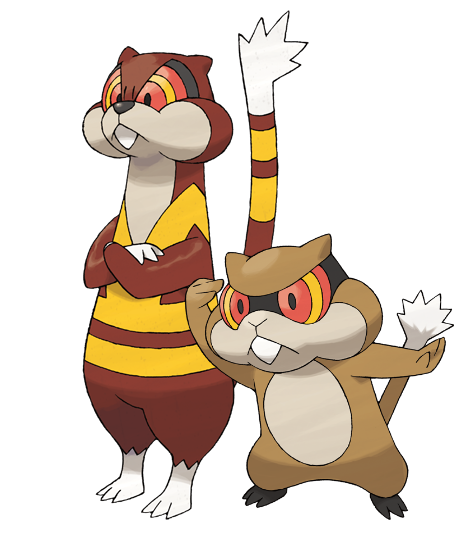
Patrat & Watchog
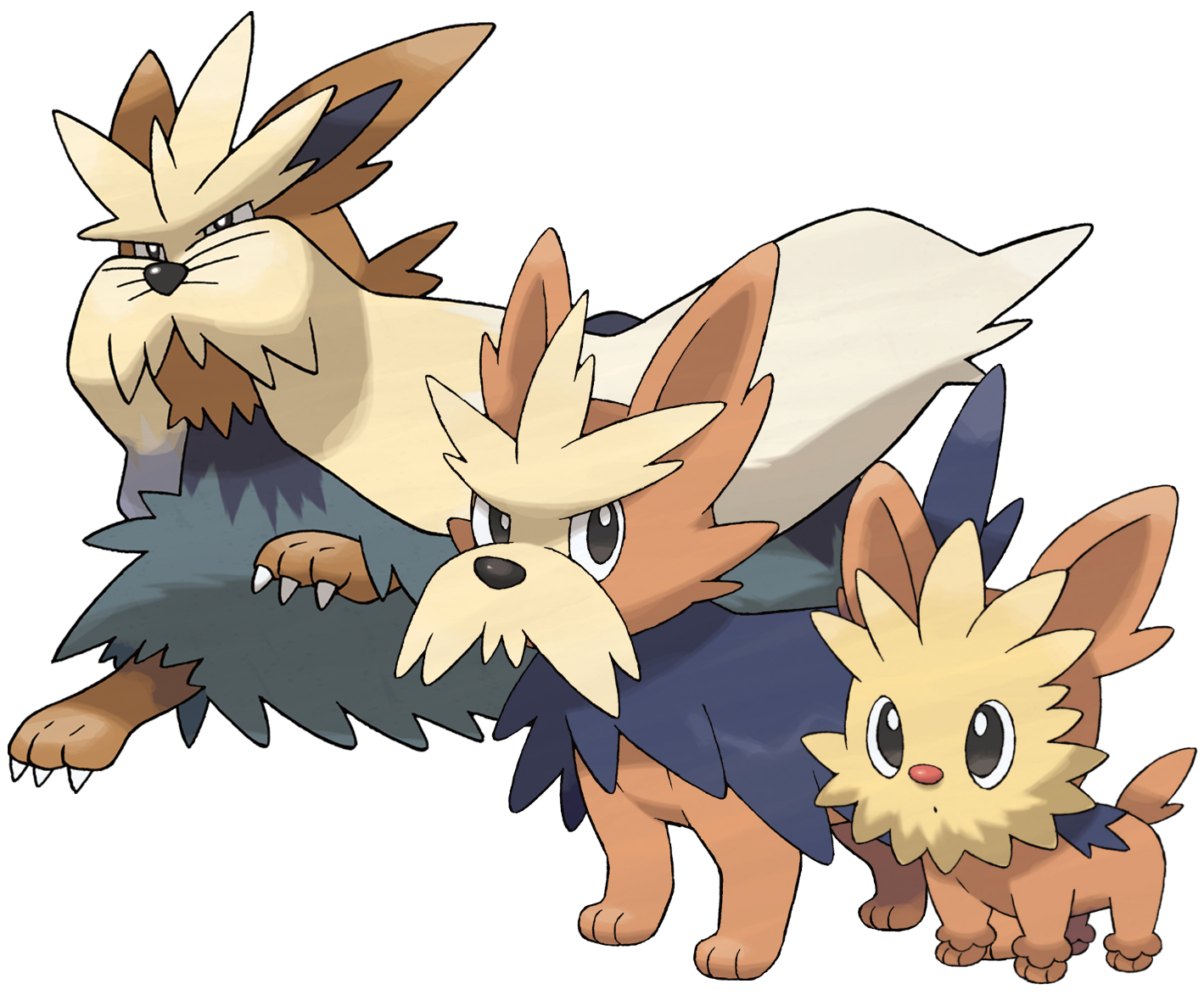
Lillipup, Herdier, & Stoutland
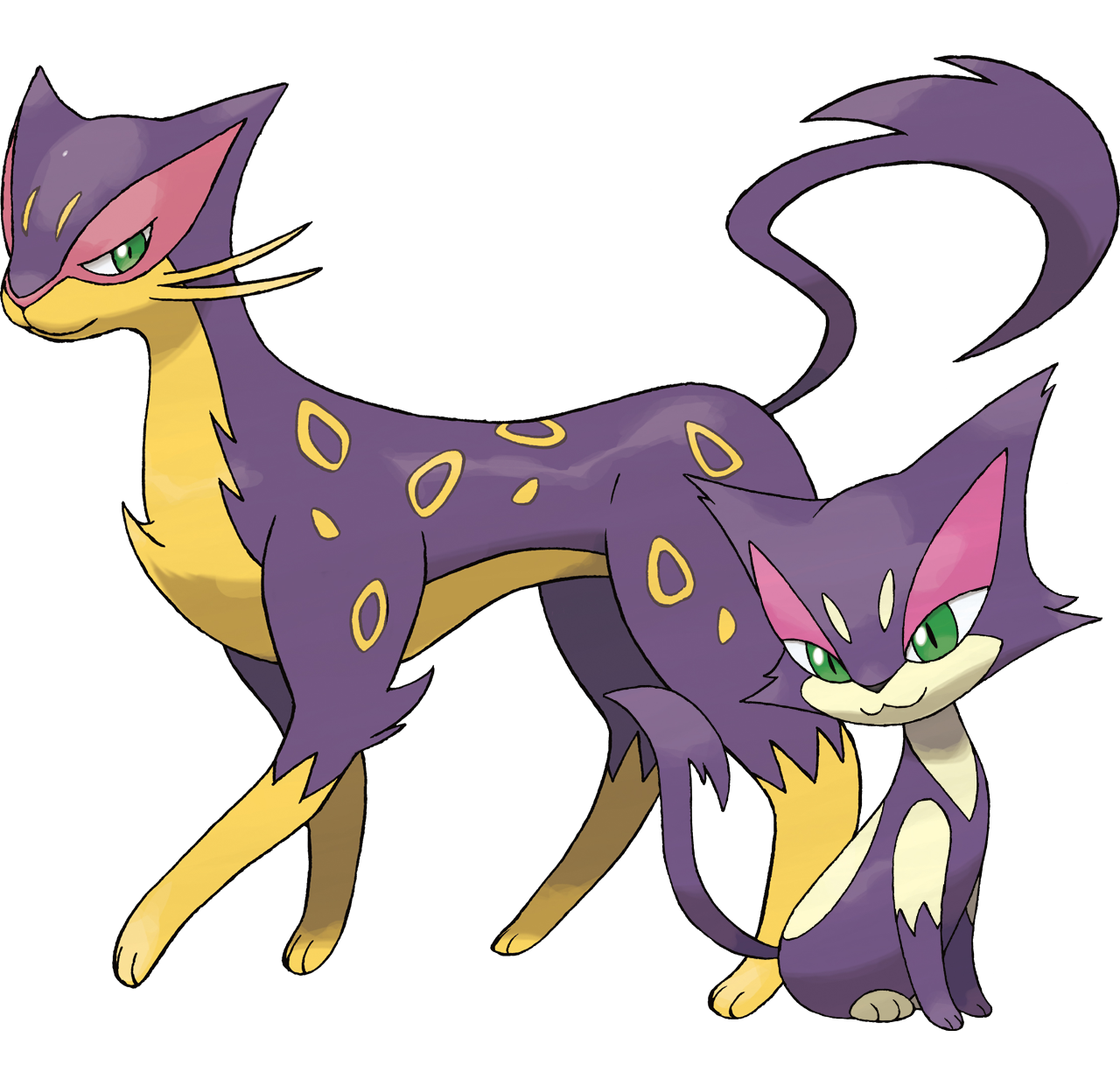
Purrloin & Liepard
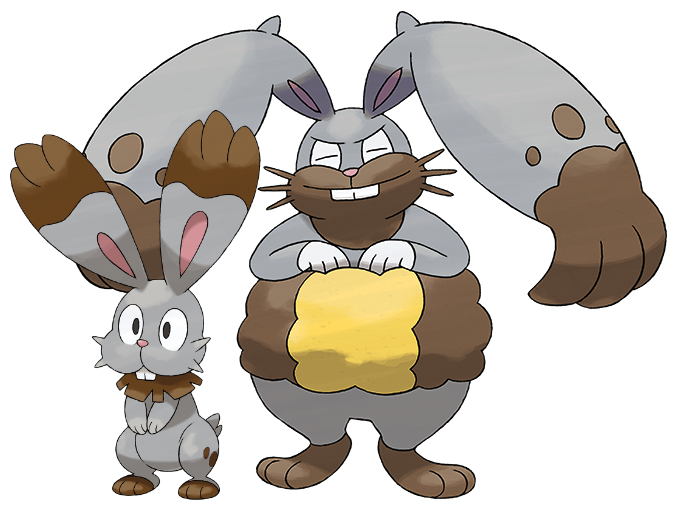
Bunnelby & Diggersby
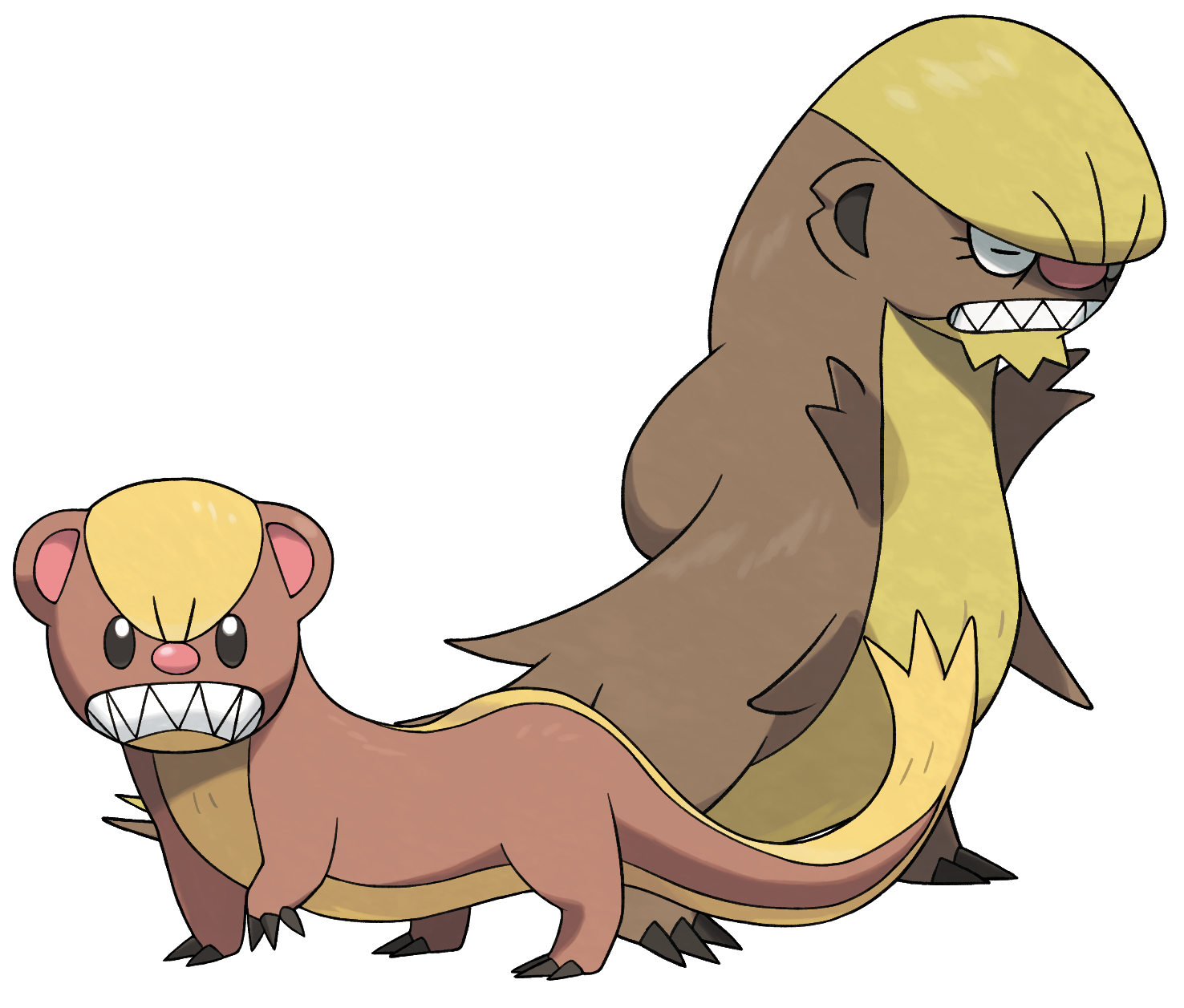
Yungoos & Gumshoos
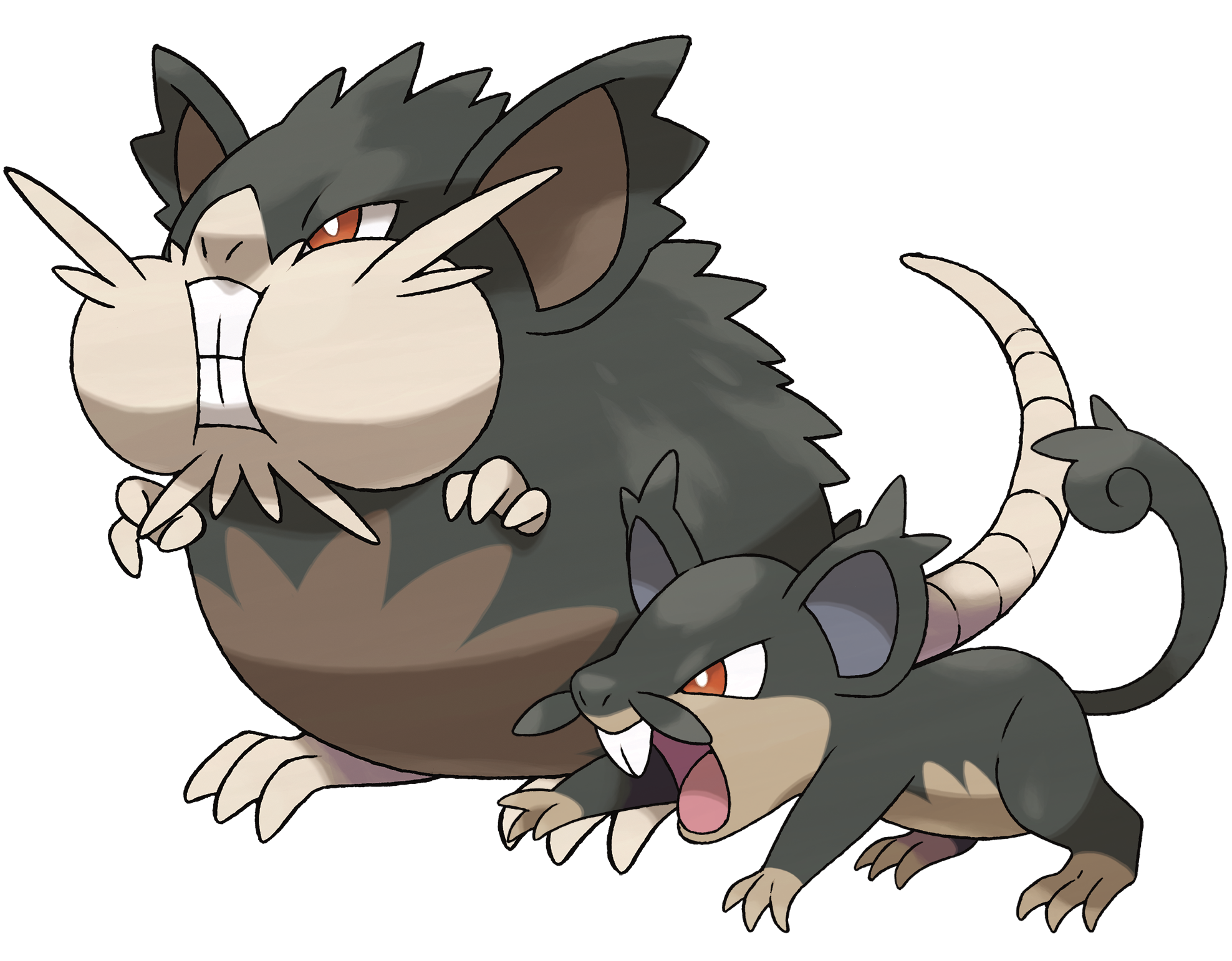
Alolan Rattata & Raticate
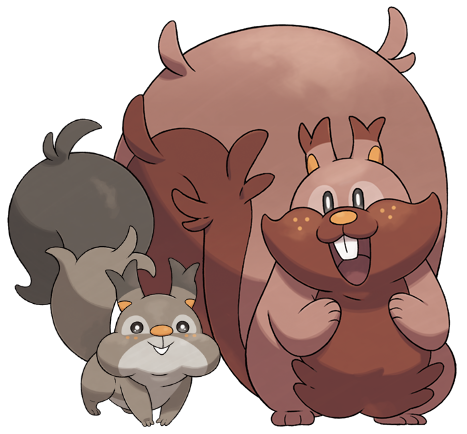
Skwovet & Greedent
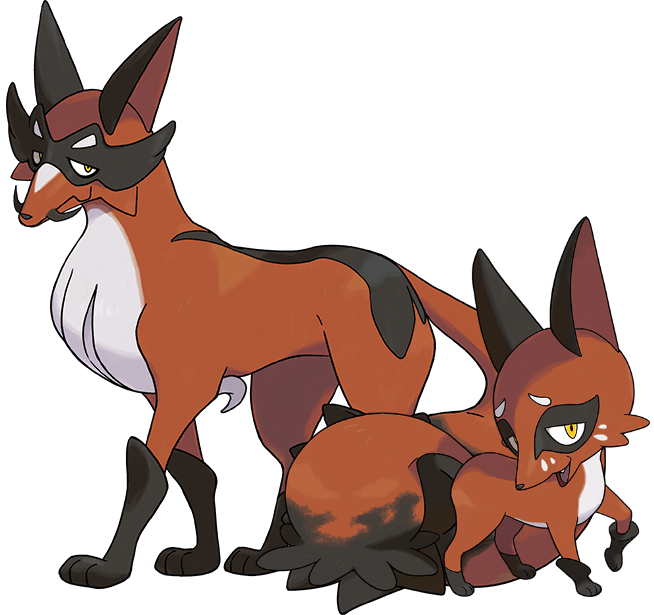
Nickit & Thievul
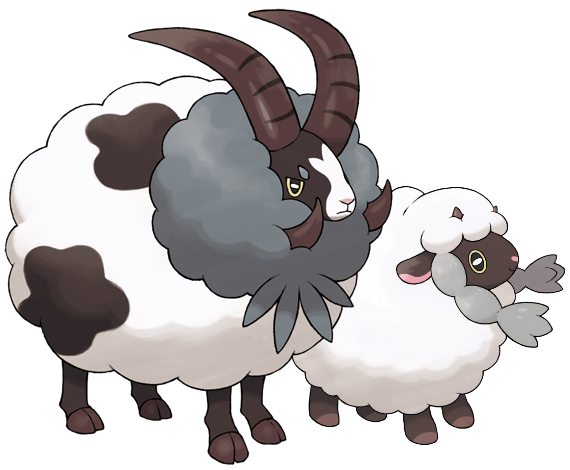
Wooloo & Dubwool
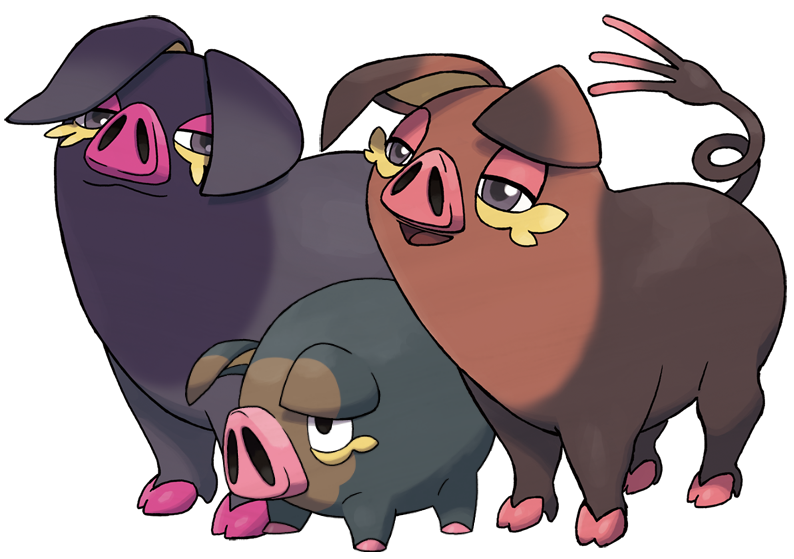
Lechonk & Oinkologne
Regional Birds
I think this group is more self-evident than the mammals, but, regardless: In every new Pokémon region, there's a bird you see throughout the region. They started as relatively consistent, with a brown/black-and-red color scheme, but eventually they realized that they could get more creative with these birds. There's so many birds in the world, after all. Pelipper was the first to not be Normal/Flying-type, and Talonflame was the first to be competitively viable outside of a rain team.
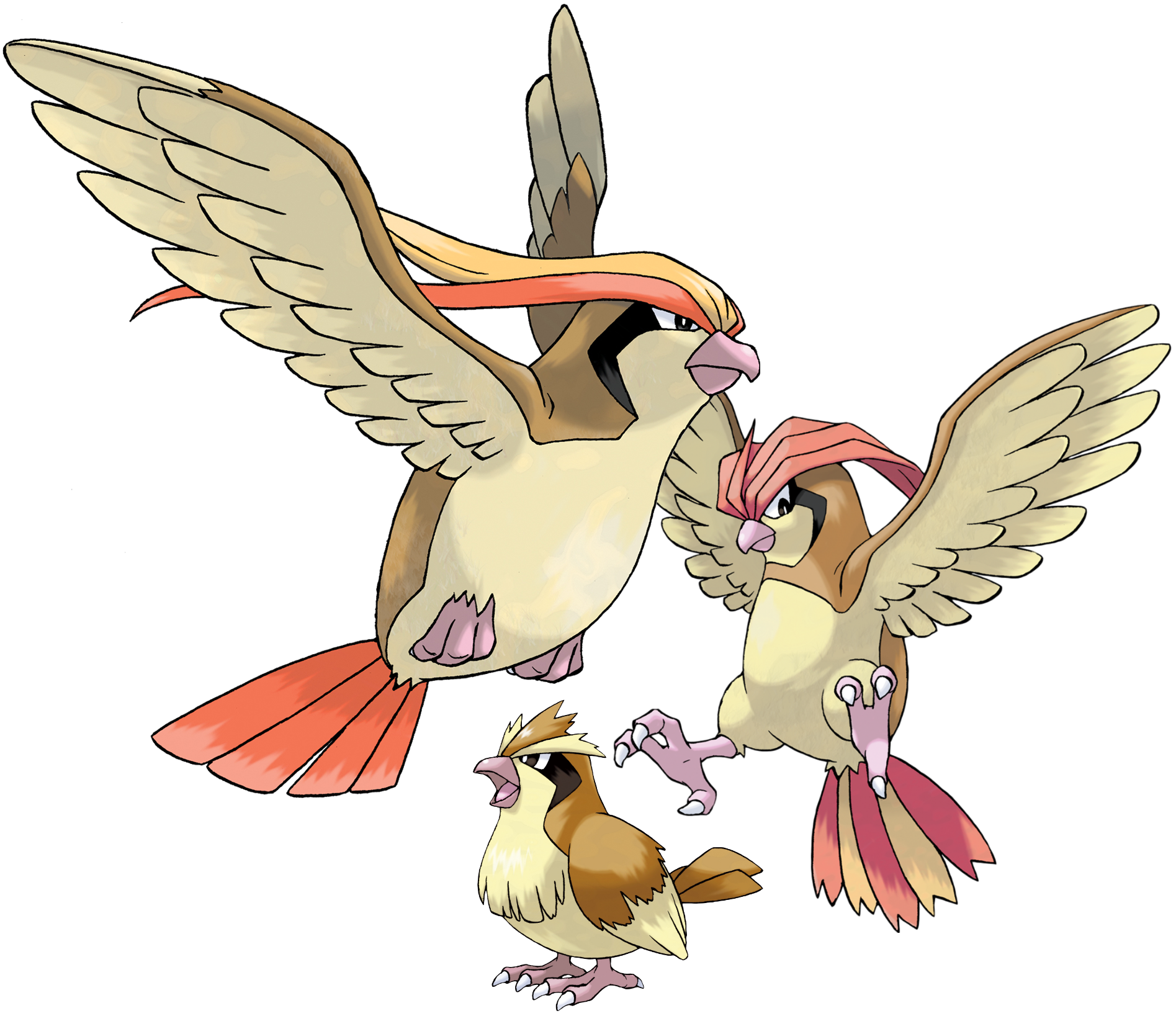
Pidgey, Pidgeotto, & Pidgeot
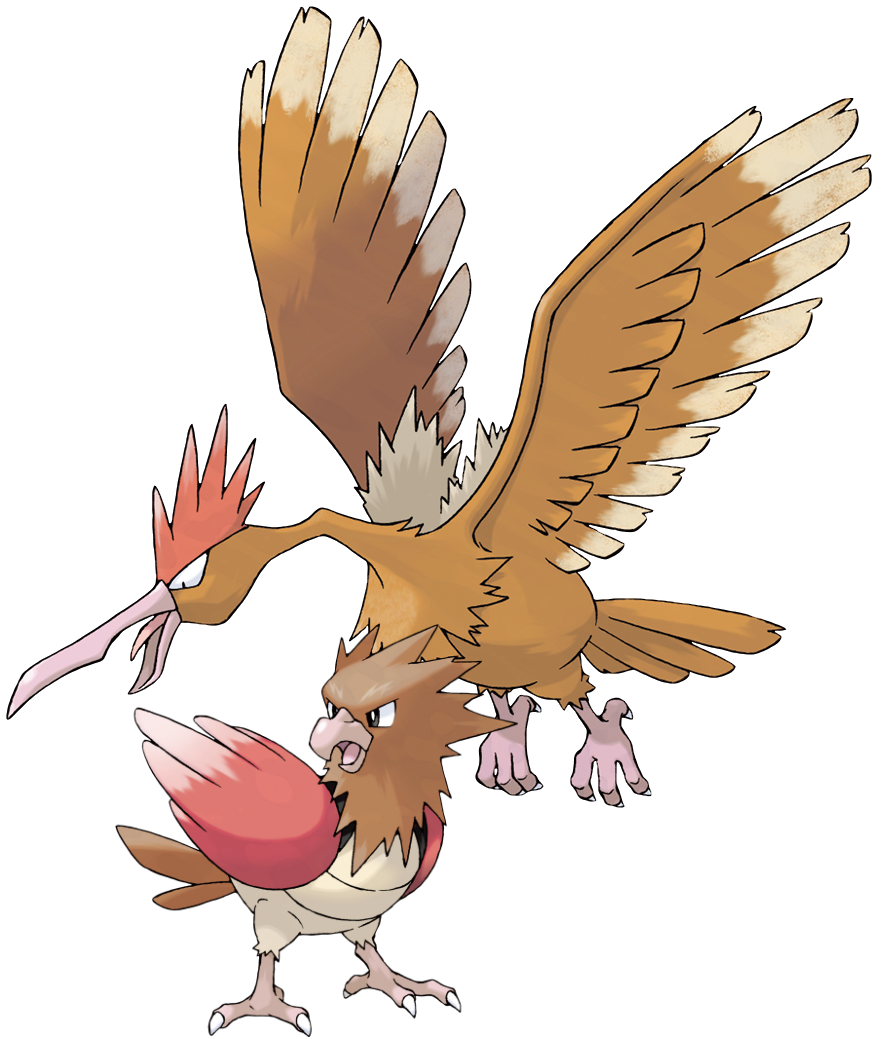
Spearow & Fearow
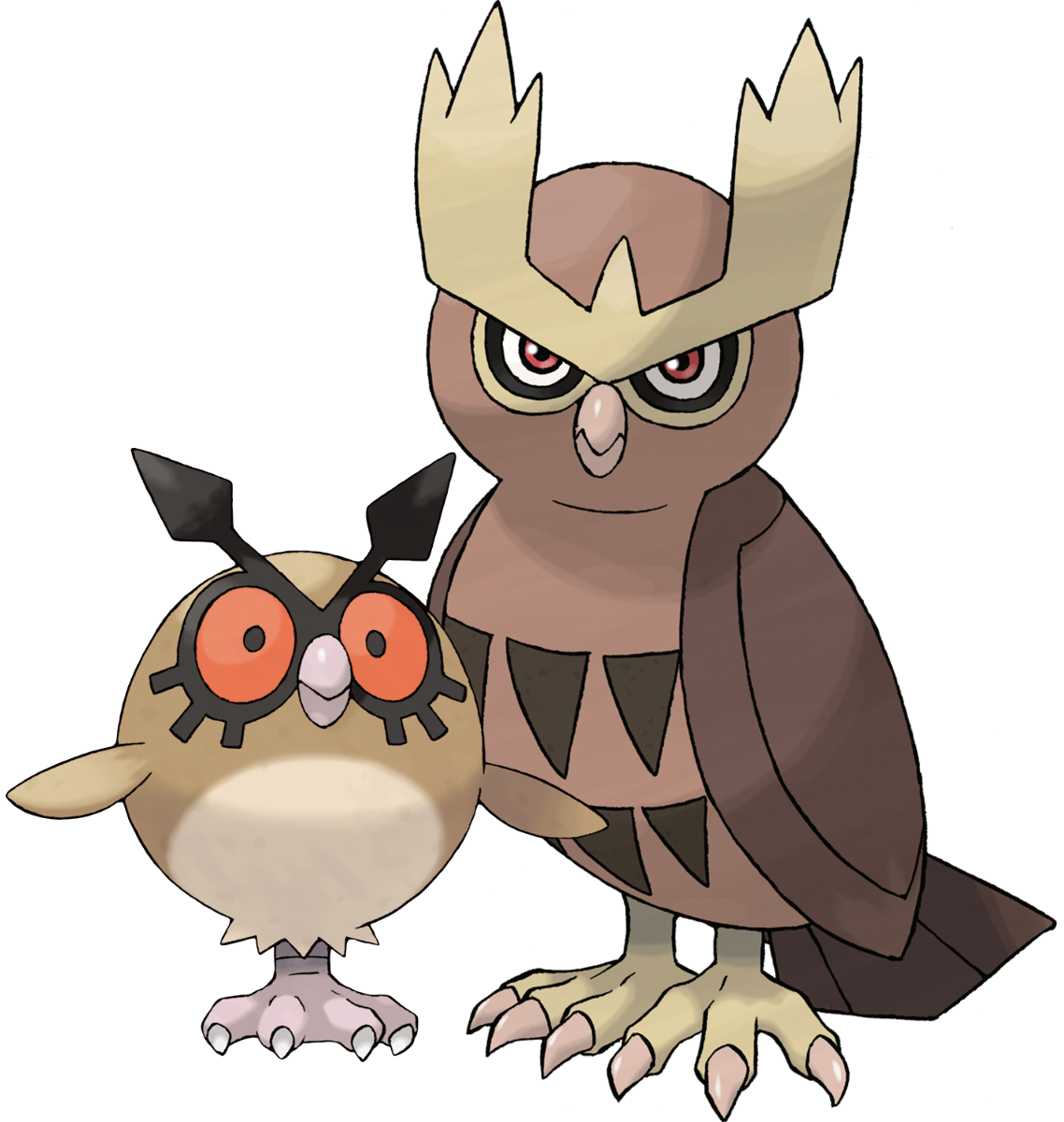
Hoothoot & Noctowl
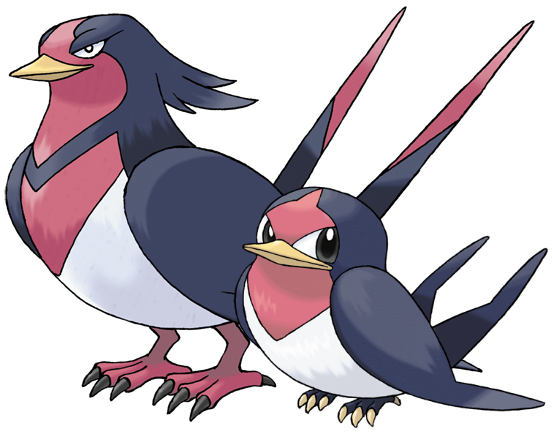
Taillow & Swellow
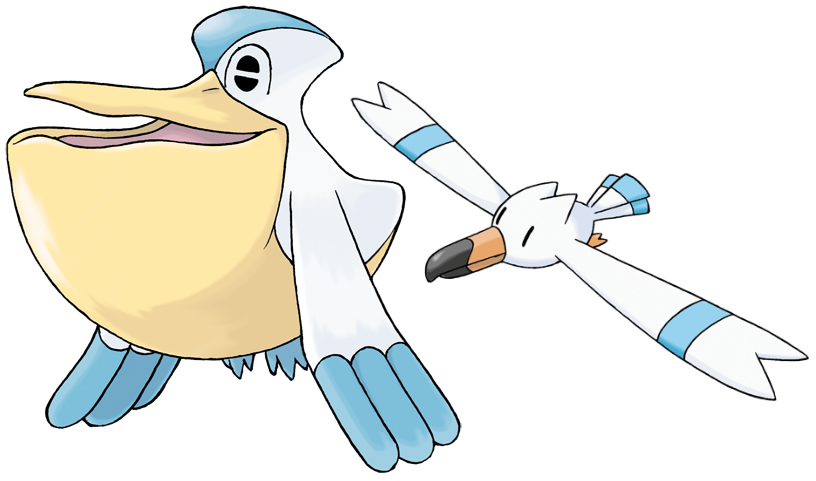
Wingull & Pelipper
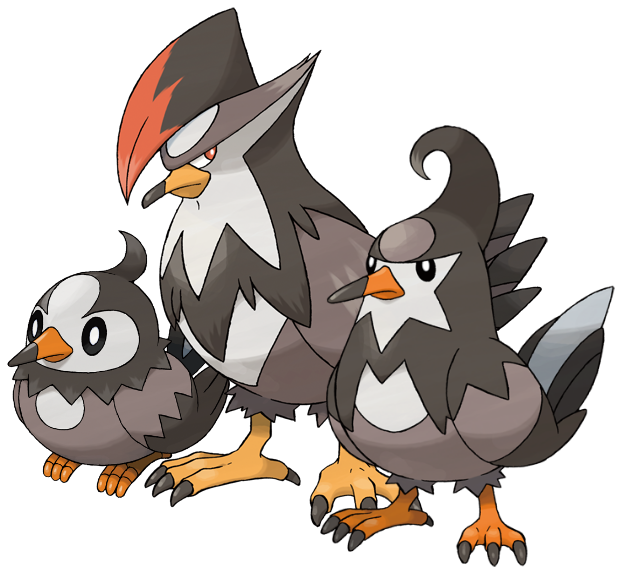
Starly, Staravia, & Staraptor
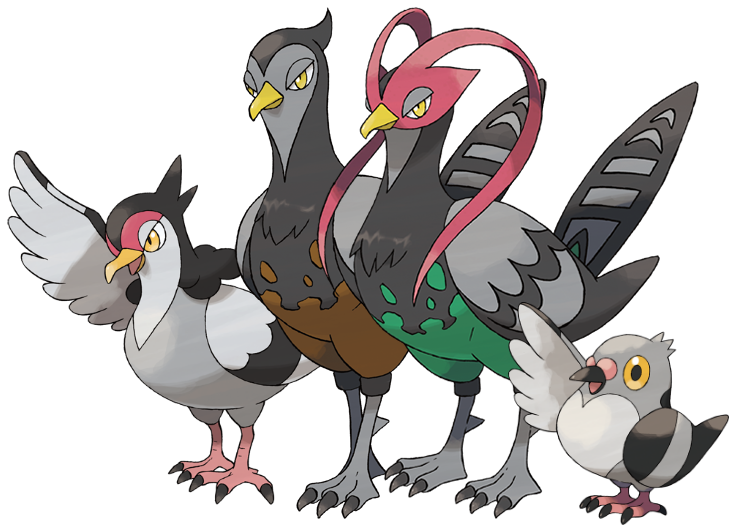
Pidove, Tranquill, & Unfezant
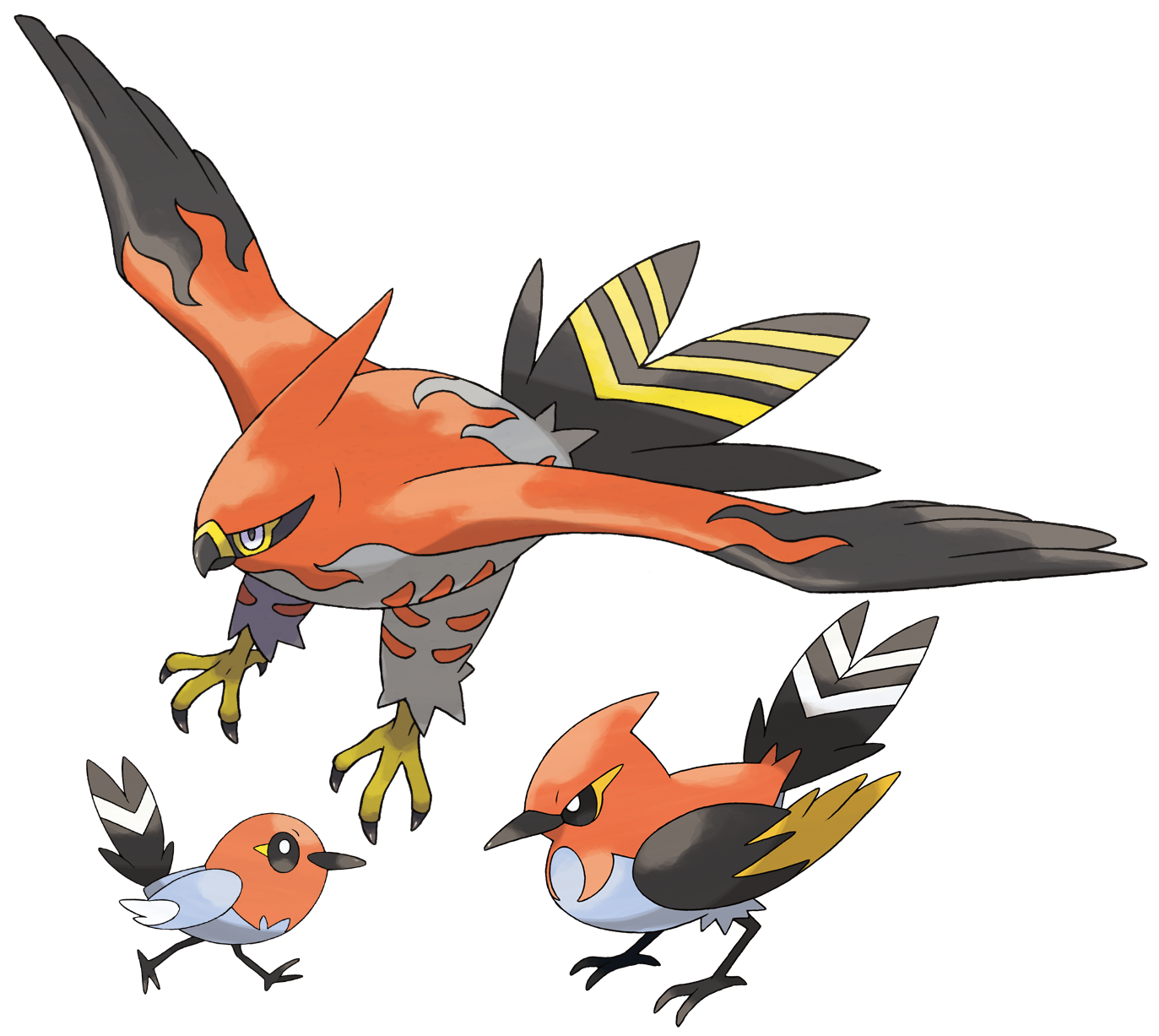
Fletchling, Fletchinder, & Talonflame
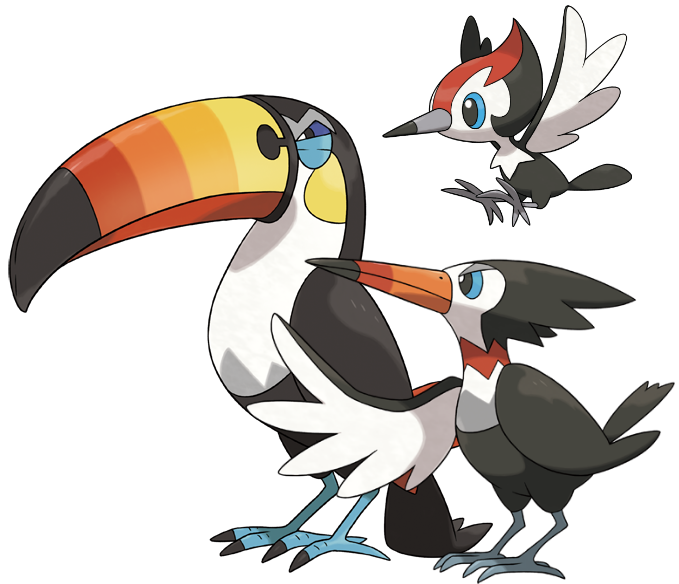
Pikipek, Trumbeak, & Toucannon
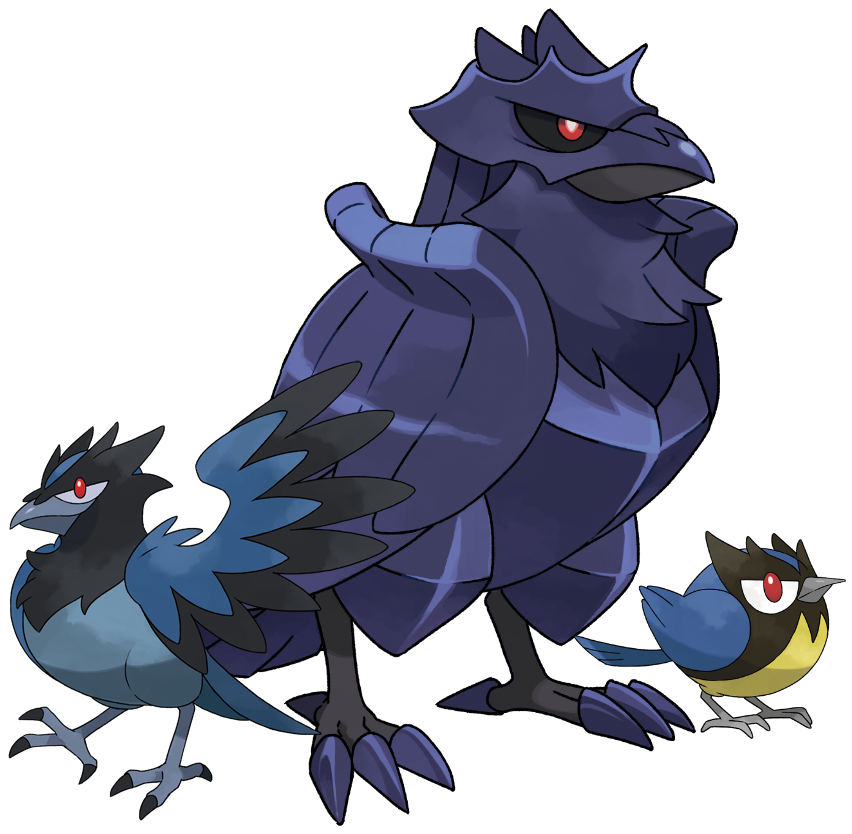
Rookidee, Corvisquire, & Corviknight
Arguable Regional Birds
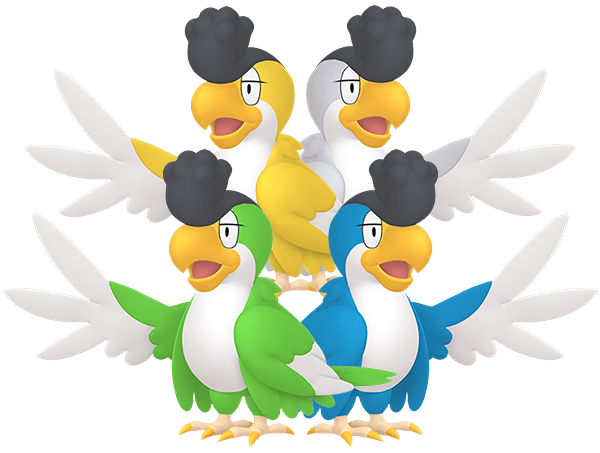
Squawkabilly
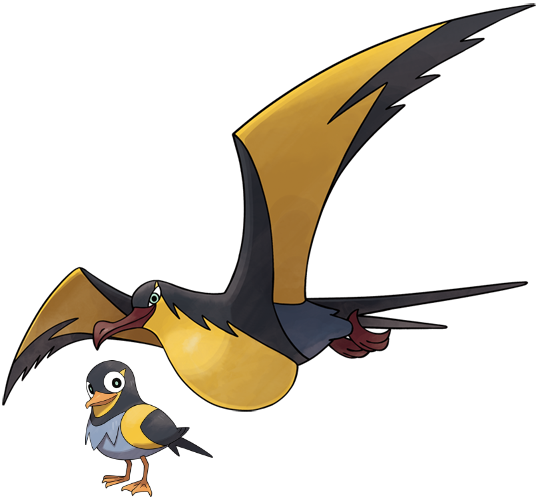
Wattrel & Kilowattrel
I think Wattrel was supposed to be the regional bird of Paldea, considering you see them fly by in the opening sequence, but I don't think it appears early enough in the game to count. Squawkabilly is the closest fit, but even then, that doesn't feel right to me, especially since it's a single-stage Pokémon. It's definitely some kind of debate to be had.
Regional Bugs
Alongside the early mammals and birds are the bugs, in either a 2-stage or 3-stage evolutionary line. Sometimes they're in a duo, and those duos are typically Bug/Flying versus Bug/Poison. I've always considered them more versatile than the regional birds, mostly since Butterfree can learn Confusion, and that's really useful in the Poison-type-heavy Kanto.
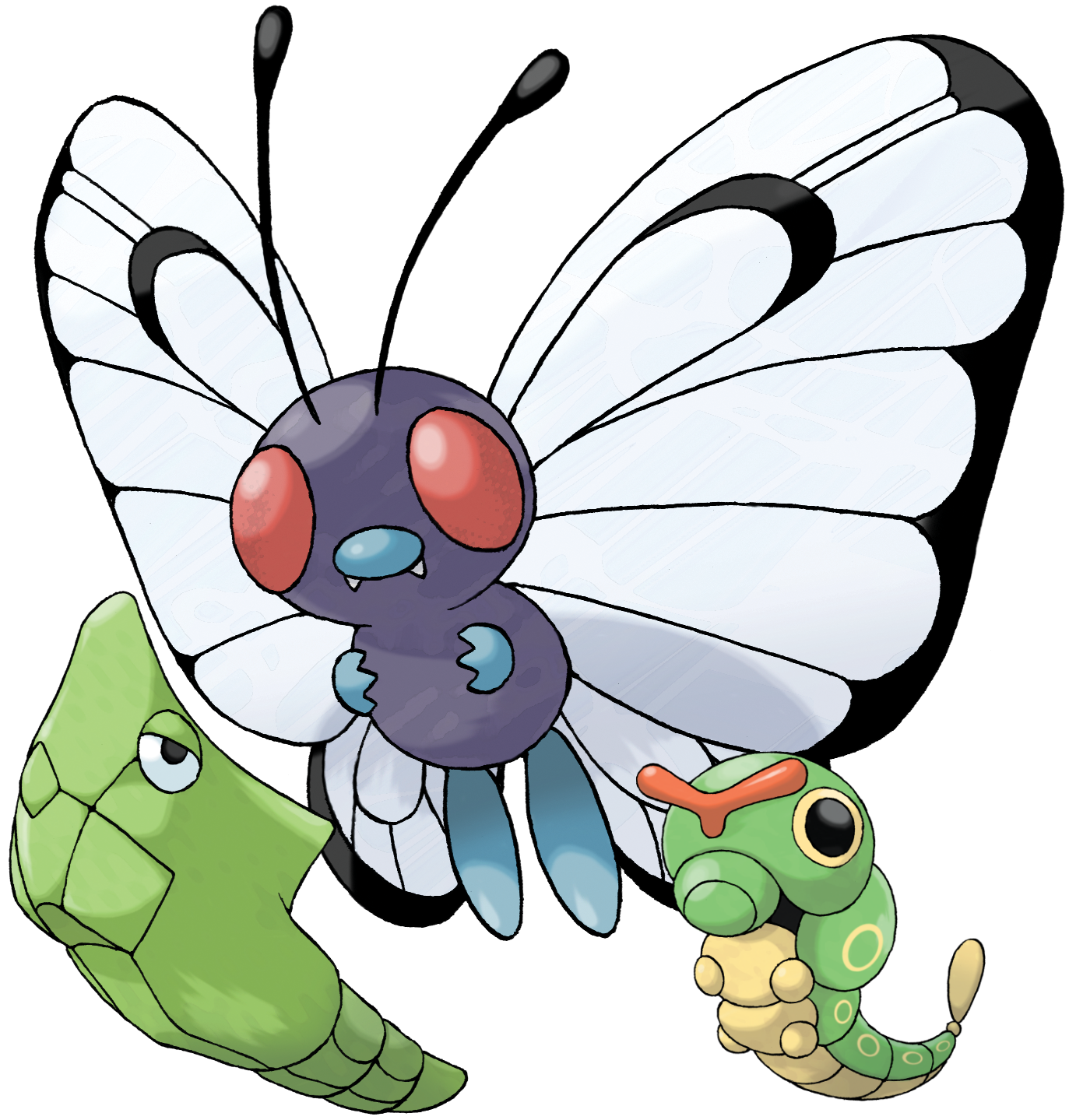
Caterpie, Metapod, & Butterfree
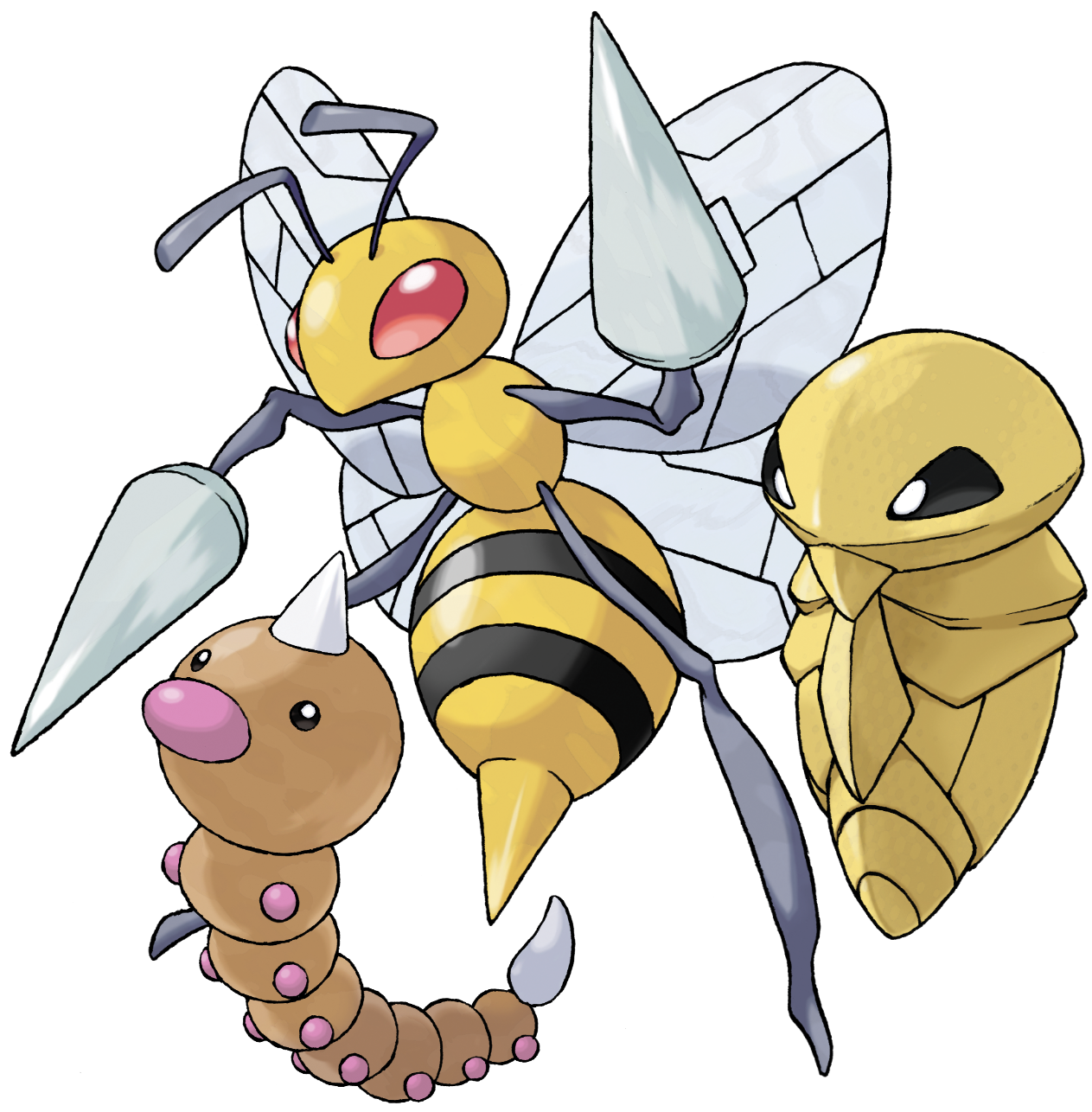
Weedle, Kakuna, & Beedrill
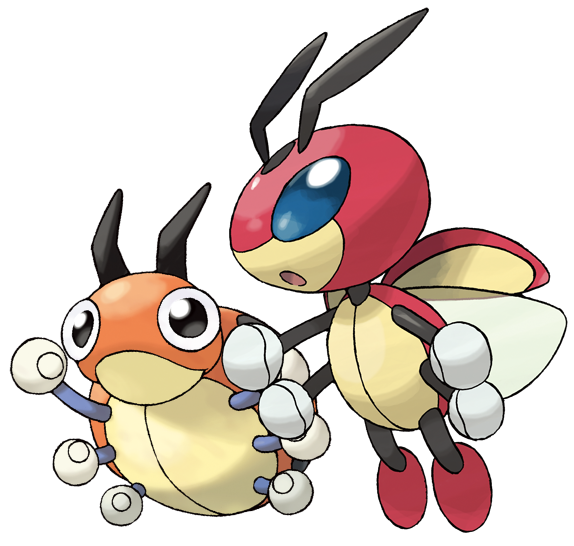
Ledyba & Ledian
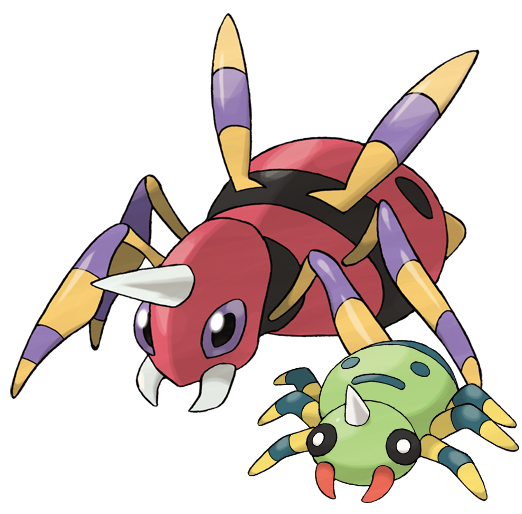
Spinarak & Ariados
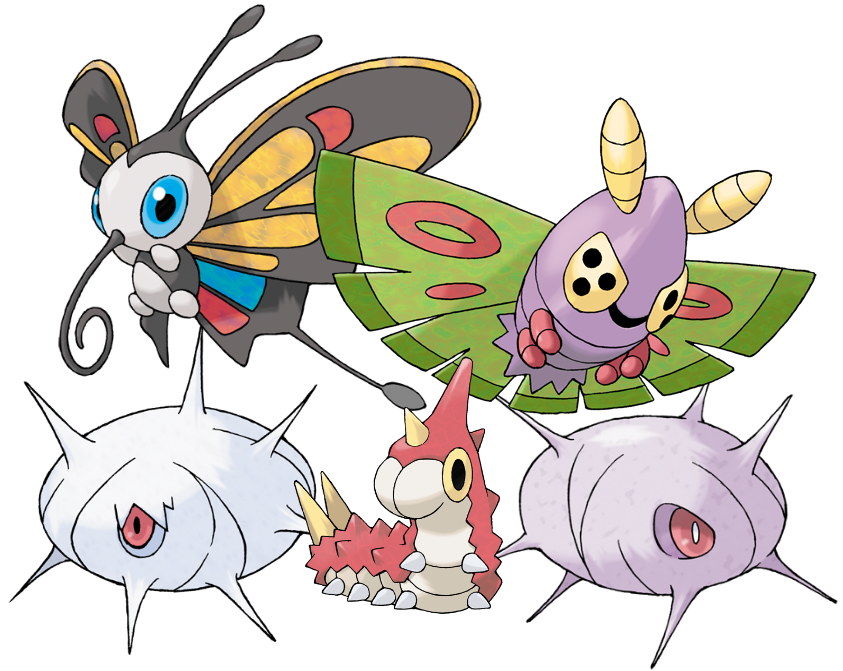
Wurmple, Silcoon, Cascoon, Beautifly, & Dustox
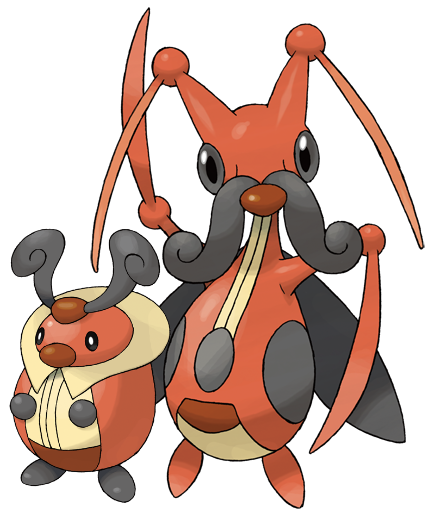
Kricketot & Kricketune
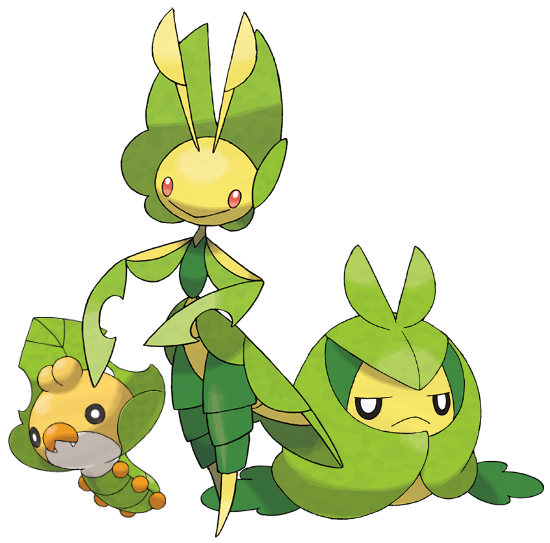
Sewaddle, Swadloon, & Leavanny
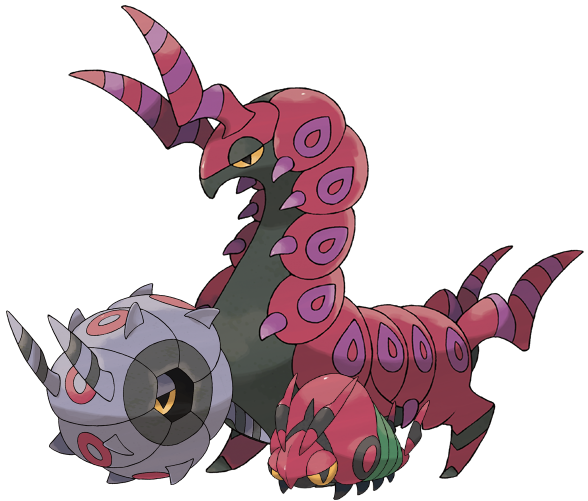
Venipede, Whirlipede, & Scolipede
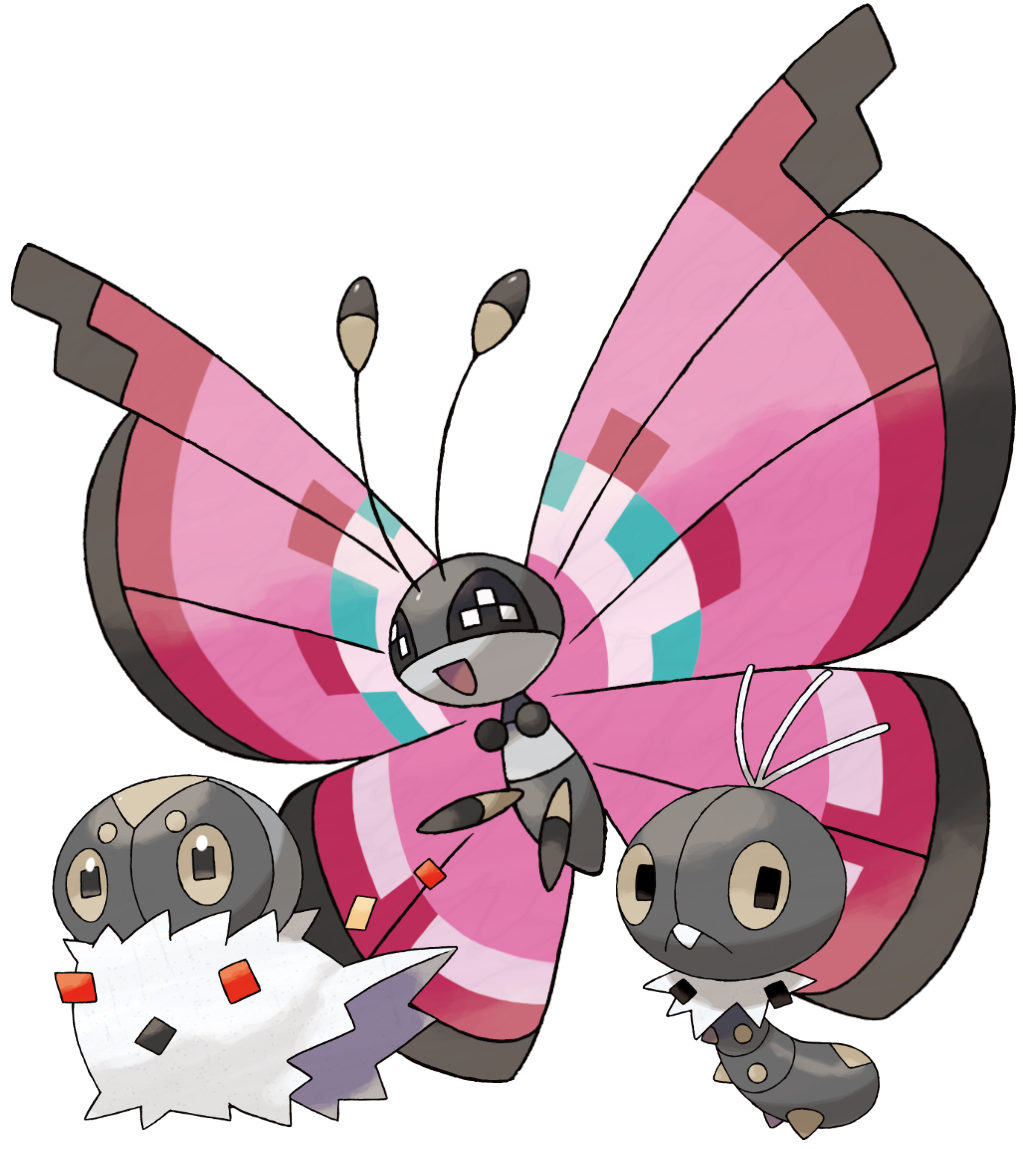
Scatterbug, Spewpa, & Vivillon
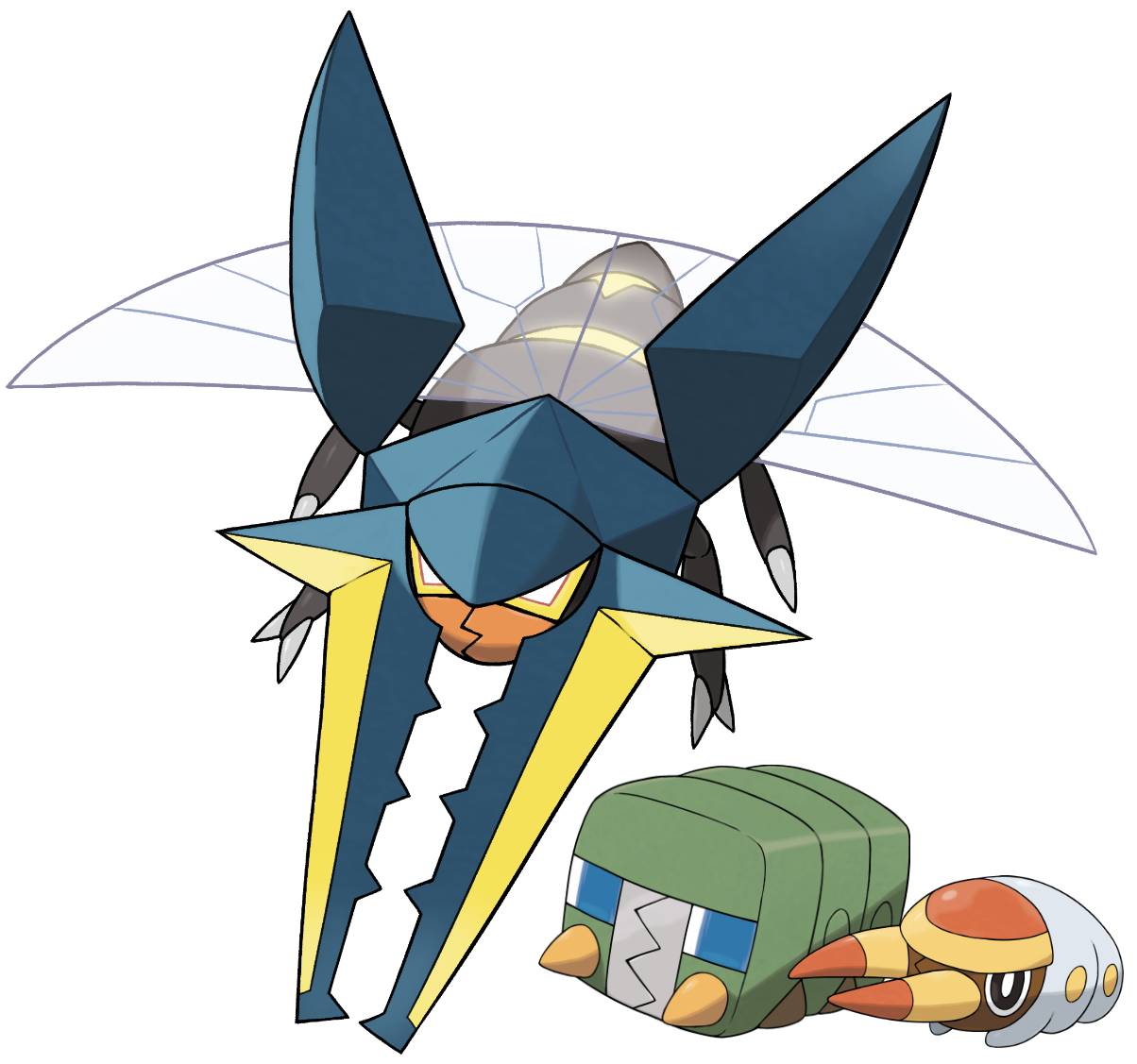
Grubbin, Charjabug, & Vikavolt
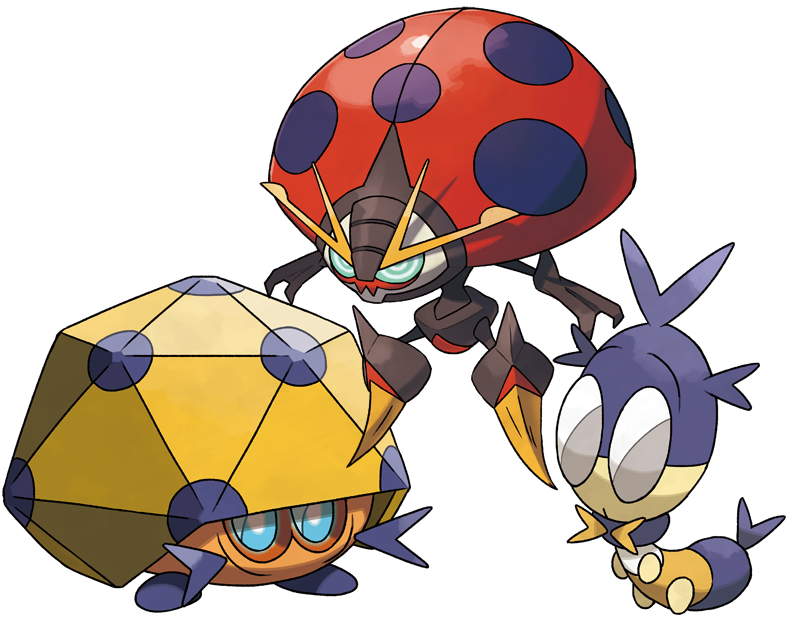
Blipbug, Dottler, & Orbeetle
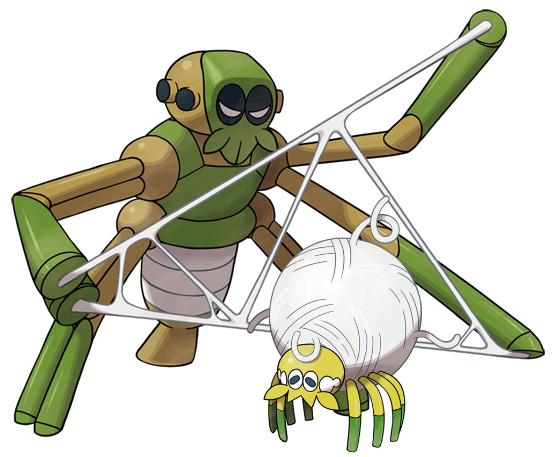
Tarountula & Spidops
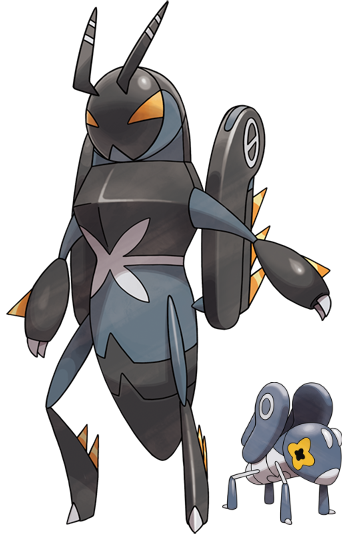
Nymble & Lokix
Arguable Regional Bugs
I think the Sewaddle and Venipede lines are definitely meant to mirror the Caterpie and Weedle lines, and they're still available pretty early in the game (see: around the 2nd Gym). But the typical regional bug is available on, like... the 2nd route? My friend Dawn argued that this later placement allows them to be stronger Pokémon, and I do agree with that. Ultimately, I decided to group them with everyone else, since I ran polls about it and people seem to consider them proper regional bugs. But they're definitely outliers.
| Created | Last Updated |
| February 21st, 2024 | August 18th, 2024 |